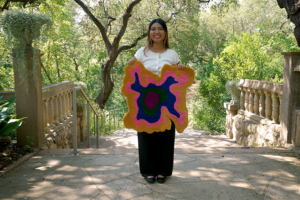The annual August Perseid meteor shower will put on its best show after midnight on Sunday and Monday, according to the editors of StarDate magazine.
Prime viewing time begins when the constellation Perseus rises into fine view in the northeast. The waxing crescent Moon will have set by then and will not obscure the view of any meteors. Under dark skies, viewers may see up to a couple of dozen meteors per hour, particularly in the pre-dawn hours of August 12.
Perseid meteors appear to fall from the constellation Perseus, but they are not associated with it. The meteors are actually leftover debris from comet Swift-Tuttle. The Perseid meteors recur each year when Earth passes through its debris trail.
Published bi-monthly by UT Austin’s McDonald Observatory, StarDate magazine provides readers with skywatching tips, skymaps, beautiful astronomical photos, astronomy news and features, and a 32-page Sky Almanac each January.
StarDate is also a daily two-minute radio feature that tells some two million listeners of more than 300 stations in the U.S. what to look for in the night sky. Sandy Wood, the longtime host whose voice is among radio’s most iconic, explains the science, history and skylore behind those objects. (Hear the Aug. 6 program about dark matter or check out the podcast.)
“One of the things I love about astronomy is that there’s always something new,” said Damond Benningfield, StarDate’s producer, in a 2011 New York Times article. “With the improvements in technology in just the time I’ve been doing ‘StarDate,’ there are more big telescopes, there are more space telescopes and what people are discovering just seems to increase exponentially.”
StarDate debuted in 1978, making it the longest-running national radio science feature in the country. It keeps listeners up to date on the latest research findings and space missions. And it offers tidbits on astronomy in the arts and popular culture, providing ways for people with diverse interests to keep up with the universe. Beginning Sept. 1, Northrop Grumman will become StarDate’s official sponsor.



